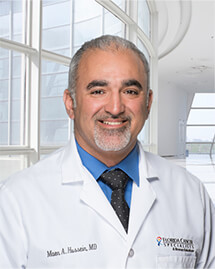Author(s): Anthony C. Nichols, MD1; Julie Theurer, PhD2; Eitan Prisman, MD3; Nancy Read, MD4; Eric Berthelet, MD5; Eric Tran, MD5; Kevin Fung, MD1; John R. de Almeida, MD6; Andrew Bayley, MD7; David P. Goldstein, MD6; Michael Hier, MD8; Khalil Sultanem, MD9; Keith Richardson, MD8; Alex Mlynarek, MD8; Suren Krishnan, MD10; Hien Le, MD11; John Yoo, MD1; S. Danielle MacNeil, MD, MSc1; Eric Winquist, MD, MSc12; J. Alex Hammond, MBBCh4; Varagur Venkatesan, MBBS4; Sara Kuruvilla, MD12; Andrew Warner, MSc4; Sylvia Mitchell, MRT4; Jeff Chen, PhD4; Stephanie Johnson-Obaseki, MD, MPH13; Michael Odell, MD13; Martin Corsten, MD14; Christina Parker, AuD15; Bret Wehrli, MD16; Keith Kwan, MD16; David A. Palma, MD, PhD4
ABSTRACT
Radiotherapy (RT) and transoral robotic surgery (TORS) are both curative-intent treatment options for oropharyngeal squamous cell carcinoma (OPSCC). Herein, we report the final outcomes of the ORATOR trial comparing these modalities, 5 years after enrollment completion. We randomly assigned 68 patients with T1-2N0-2 OPSCC to RT (with chemotherapy if node-positive) versus TORS plus neck dissection (± adjuvant RT/chemoradiation). The primary end point was swallowing quality of life (QOL) assessed with the MD Anderson Dysphagia Inventory (MDADI). Secondary end points included overall and progression-free survival (OS, PFS), adverse events (AEs), and other QOL metrics. The primary end point has been previously reported (Nichols 2019).
In this report, the median follow-up was 5.1 years (IQR, 5.0-5.3 years). MDADI total scores converged by 5 years and were not significantly different across the follow-up period (P = .11). EORTC QLQ-C30 and H&N35 scores demonstrated differing profiles, including worse dry mouth in the RT arm (P = .032) and worse pain in the TORS arm (P = .002). Grade 2-5 AE rates did not differ between arms (91% [n = 31] v 97% [n = 33] respectively, P = .61), with more neutropenia and hearing loss in the RT arm, and more dysphagia and other pain in the TORS arm based on grades 2-5 (all P < .05). There were no differences in OS or PFS.
In conclusion, toxicity and QOL profiles differ in some domains between RT and TORS, but oncologic outcomes were excellent in both arms. Choice of treatment should remain a shared decision between the patient and their providers.
Author Affiliations
1Department of Otolaryngology—Head and Neck Surgery, Western University, London, ON, Canada;
2School of Communication Sciences and Disorders, Western University, London, ON, Canada;
3Department of Otolaryngology, University of British Columbia, Vancouver, BC, Canada;
4Division of Radiation Oncology, Western University, London, ON, Canada;
5Department of Radiation Oncology, University of British Columbia, Vancouver, BC, Canada;
6Department of Otolaryngology—Head and Neck Surgery, University Health Network, University of Toronto, Toronto, ON, Canada;
7Department of Radiation Oncology, University Health Network, University of Toronto, Toronto, ON, Canada;
8Department of Otolaryngology—Head and Neck Surgery, McGill University, Montreal, QC, Canada;
9Department of Radiation Oncology, McGill University, Montreal, QC, Canada;
10Department of Otolaryngology—Head and Neck Surgery, Royal Adelaide Hospital, Adelaide, SA, Australia;
11Department of Radiation Oncology, Royal Adelaide Hospital, Adelaide, SA, Australia;
12Department of Medical Oncology, Western University, London, ON, Canada;
13Department of Otolaryngology—Head and Neck Surgery, University of Ottawa, Ottawa, ON, Canada;
14Division of Otolaryngology—Head and Neck Surgery, Dalhousie University, Halifax, NS, Canada;
15Department of Audiology, London Health Sciences Centre, London, ON, Canada;
16Department of Pathology, Western University, London, ON, Canada;
